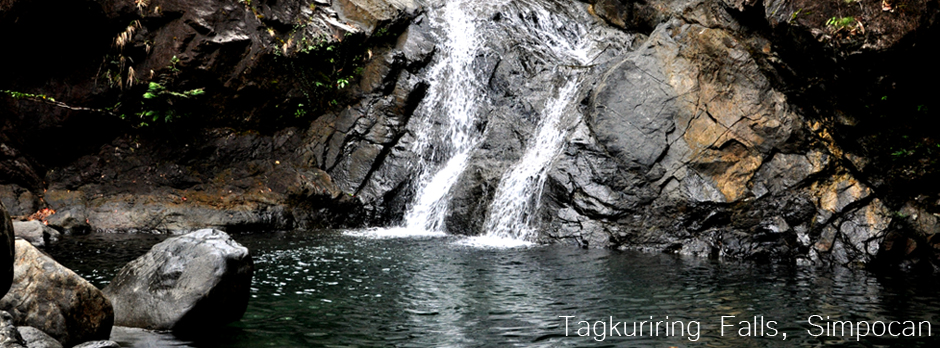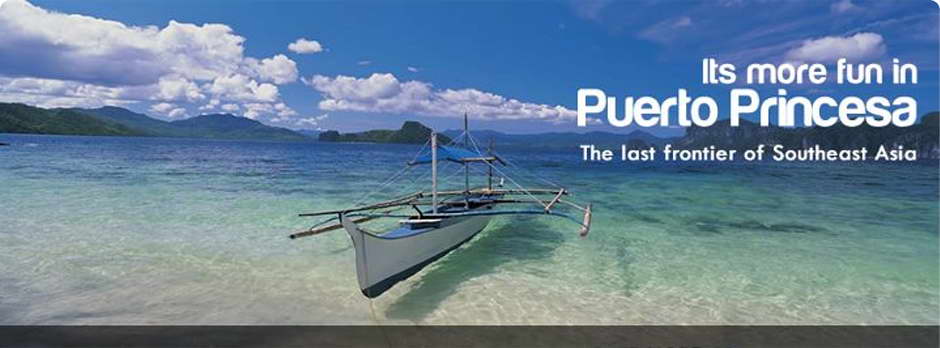CLICK HERE! For Electronic Services and Online Payment

Protect. Rehabilitate. Plan. These are the program’s key management thrusts. Protect what is there, rehabilitate what has been destroyed, and plan for the intelligent utilization of the city’s terrestrial and marine resources. This is the life cycle that the program envisions for the community to achieve sustainable development.
PROGRAM ABSTRACT
Puerto Princesa is a relatively young city, having been established only on 01 January 1970. It is the largest city in the Philippines, with a land area that occupies 17.05% of the province’s entire width and breadth. One fifth of the province’s total population resides in the city.
Considered as the country’s “Last Frontier” for having been the last area in this part of the world to be ravaged by man, Puerto Princesa and Palawan boast of mountains and valleys of lush virgin forests with century-old trees of various species, softwood and hardwood alike. Its flora and fauna are the image of God’s perfect creation, teeming with wildflowers and wildlife that are endemic in Palawan alone.
The city’s seawaters are just as rich in marine life. Sixty percent of Metro-Manila’s ten million population get their fish supply from Puerto Princesa in particular and Palawan in general. Indeed, many of its marine products – from lobsters to sea cucumber to seaweeds – end up in American, European, and Asian markets.
But things are rapidly changing. The city’s vast land area and its rich seawaters have become like magnets that attracted a lot of in-migration from all over the country. And the uncontrolled population influx has wrought havoc to its ecological system. Illegal logging, slash-and-burn farming, blast and cyanide fishing became the new mode of production among a new group of people stricken with the get-rich-quick mentality.
Consequently, the forest cover of Palawan including Puerto Princesa City has been reduced tremendously from 75% in 1976 to 50% in 1992. Within only a sixteen-year period, 63,495 hectares of once verdant lands had been systematically denuded, averaging about 3,968.4 hectares per year and 10.87 hectares per day. Some parts of the city soon began to experience flash floods during heavy monsoon rains.
The marine ecology on the other hand underwent huge devastation due to dynamite, cyanide, and trawl fishing; precious coral reefs and other marine life habitats were destroyed. Things had so changed that the prices of fish and other marine products were becoming more prohibitive and beyond the reach of ordinary households. Adding insult to this environmental injury was the apathy of those in government who seemed to see and hear no evil in the ongoing ecological slaughter.
On July 1992, the people of Puerto Princesa elected a new leader in the person of Mayor Edward S. Hagedorn. Agonizing over the widespread environmental depredation, he immediately instituted counter-measures and central to this is the Bantay Puerto Program or Puerto Princesa Watch.
One of the major components of Bantay Puerto is Bantay Gubat or Forest Watch, which is tasked with the protection, conservation and rehabilitation of the city’s forest areas. It has confiscated hundreds of thousand of board feet of prime lumber, hundreds of talking birds, dozen of chainsaws and trucks full of logs. It has also apprehended more than two hundred persons found violating various forest ordinances, filed cases against sixteen of them, two of whom have already been convicted.
To rehabilitate the denuded areas of the city’s forest-lands, the program embarked on a massive reforestation scheme. Dubbed as “Pista Y Ang Kagueban” or Feast of the Forest, it has mobilized thousands of people from all walks of life, and greatly succeeded not only in terms of the number of trees actually planted (about 1.2 million with an 80% survival rate), but also in inculcating the proper attitude among the Puerto Princesans toward tree planting and conservation. Celebrated every last Saturday of June, this unique feast has transformed from a novel reforestation activity to becoming a tourist-attracting one.
Another is Bantay Dagat or Baywatch whose primary role is the protection and conservation of the city’s marine ecology by waging an all-out drive against illegal fishing and related activities in its four strategic bays, namely: Puerto Princesa Bay, Honda Bay, Turtle Bay, and Ulugan Bay. It has apprehended 1,657 pump-boats and 46 fishing boats for violations of various fishing laws and city ordinances. One vessel, worth P20 million, was forfeited in favor of the city government. Some 18 tons of fish, including live ones, found illegally caught were confiscated.
Among the illegal methods of fishing, the one that uses cyanide is the most pernicious and the most difficult to control. Unlike dynamite or trawl fishing, cyanide fishing is a very silent operation and is usually done underwater. And because of the great demand for live fish and its relatively high price in the market, cyanide fishing has become rampant in the city. To address this, Mayor Hagedorn moved for the passing of a legislation banning the shipment of live fish, the catching of which is blamed for the destruction of the city’s coral reefs through the use of cyanide. And to protect the interest of the legitimate live fish catchers, the Cyanide Detection Test Laboratory was established to scientifically determine if fish were caught by illegal means. It is the first such facility in the country to be put up by a local government unit.
In 1993, P7.67 million was appropriated by the city government to the Bantay Puerto Program for a per-capita expenditure of only P47.37. Overall value of confiscated goods and equipment totaled P50 million, thereby making the program indubitably a resounding success. For 1994, its budget was trimmed to P6 million, almost two million less than its original. The decrease is a result of less capital expenditure due to a better-informed public. A zero marine-related crime rate in the Puerto Princesa Bay is a testimony to this.
Encouraged by the city leadership’s success in preserving its rich natural resources, the Department of Environment and Natural Resources (DENR) turned over to the city government the management and control of the world-renowned 5,753- hectare Puerto Princesa Subterranean River National Park which is believed to be home to the world’s longest navigable underground river. This devolution of management from the national to the local is the first in the history of the country. Since then, the Park has become the city’s foremost tourist destination.
DIFFICULTIES/CHALLENGES ENCOUNTERED
Expectedly, a few powerful forces who enriched themselves from the wanton exploitation of the city’s forest and marine resources through illegal logging; trawl, cyanide and blast fishing; and, the merchants of their illicit products raised the strongest howls.
Predictably, too, the “kaingin” or slash-and-burn farming likewise caused quite a furor. Now prohibited to plant “kaingin” rice which does not entail extensive land preparations – a practice they have been doing for ages – the Program initially became the focus of a lot of anger and resentment among the rural folks.
To wean these farmers from such antiquated and destructive practices and to tide them over during the difficult transition period, Mayor Hagedorn instituted stop-gap measures such as Cash-for-Work Program and rice subsides, and permanent productivity enhancing structures like the Carabao and Tractor Pool and provision of various seedlings.
These and the goodwill already earned by the City Leadership over the farming sector through programs specifically created to help the rural population, such as the establishment of the Satellite Hospital and Barangay Libraries, caused the opposition to the conservation program to soon die down.
STAFF
A Program Coordinator who reports directly to the City Mayor heads the program. Each component is in turn headed by a Project Manager. The Program Coordinator runs the daily affairs of the program, including coordination with concerned government and non-government sectors, and all the other sectors of society to ensure successful implementation of its goals and objectives.
LESSONS LEARNED
Puerto Princesa three years back and beyond was a microcosm of the Philippines’ environmental drift. Its forest and seas were the most convenient sources for both the needy and the greedy to make a fast buck, and to heck with tomorrow. With many of its people living along the coastlines, a tragedy in the Ormoc proportions was only waiting to happen… until one person with enough sense and sanity to revert it came into the helms of the local government.
Now it can be said that it can be done. Hopefully, all the Filipinos and the people of the world can be led into a realization that environment preservation is non-negotiable if humanity is to survive. After all, we all live in the same planet, and Earth is the one commonality we all share with.
The Bantay Puerto Program earned in 1993 the city’s first Galing Pook Award given by the Asian Institute of Management.
Featured Articles |
USAID/SURGE Project |
































